Discovering Local Biomaterials: Boertex¶
From Food waste to Fashion.
What:¶
The mission:
Discovering Local Biomaterials: Boertex.
To create a Biomaterial garment from an abundance of a vegetable waste stream in The Netherlands. From food waste to fashion design.
The intention of Boertex is to experiment with the vegetable waste and my job as a fashion designer is to explore whether it is possible to make a “current” design using this biomaterial. A final prototype will be made with textile alternatives to raise awareness around material innovation.
Boertex finds itself in phase 1 due to the current circumstances (covid- 19 pandemic).
Realistically this project finds itself in its first phase, the timeless is as follows:
-
Material innovation: exploration of material properties.
-
The design of the material: Creating sheets of biomaterial for a garment prototype.
-
The final garment: As a showpiece for the overall Boertex concept.
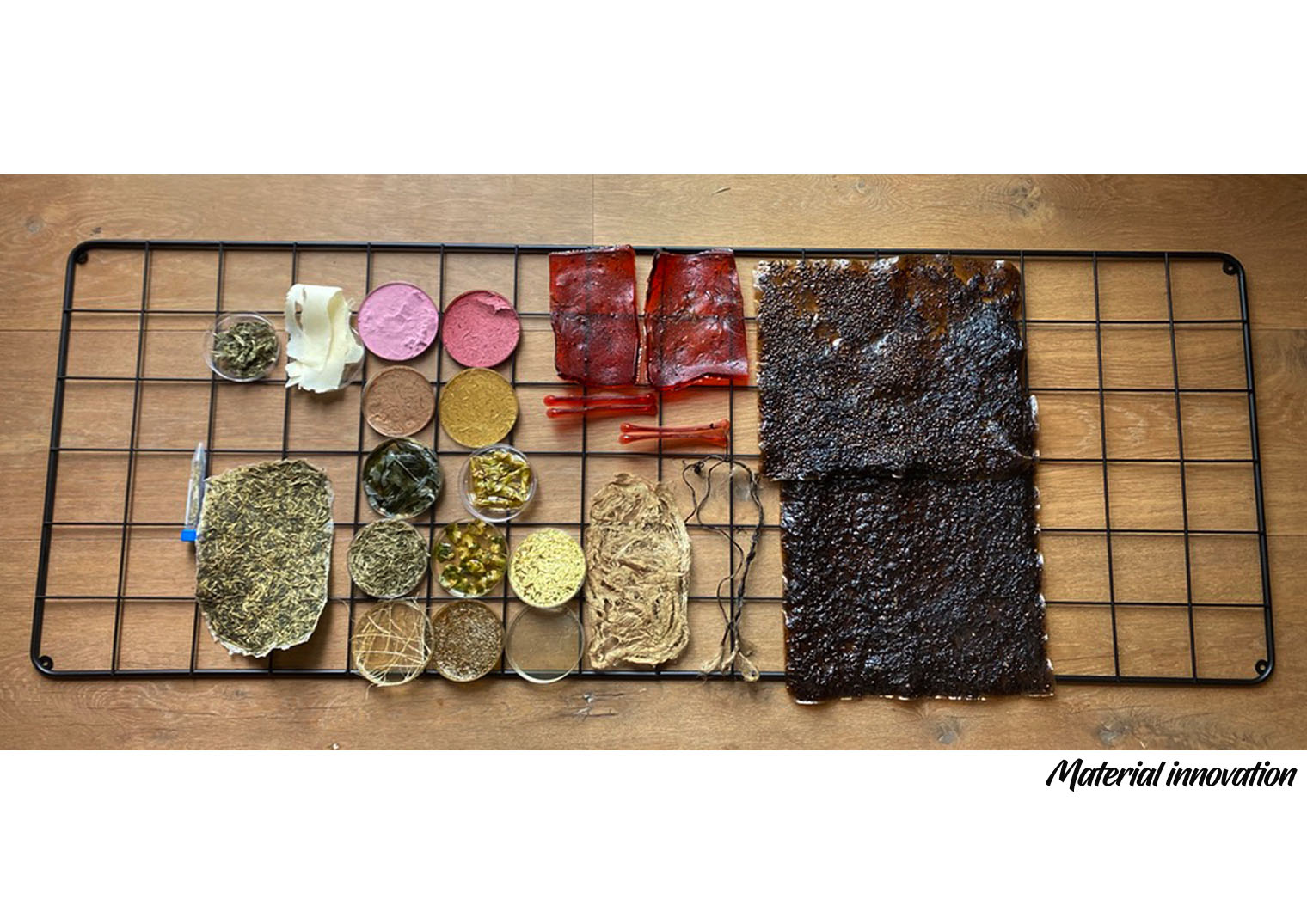
Why?¶
Why: Why did I choose to explore material properties as a fashion designer? Why am I doing this project? Place your story telling over here.
My role as a designer is to push the limitations to Design and to explore new material advancements. Keeping up to date with current innovation is one way of discovering new methods to tackle the unsustainable textile productions and systems. Boertex therefore challenges circular systems, designs and creative thinking and the brand considers the physical properties/behaviour a material carries when biofabricated. Looking towards alternative materials as part of a sustainable lifestyle.
How?¶
The development of this project:
Discovering Local Bio materials: Boertex recipe book
- One garment/ photoshoot and all to create the idea behind the concept. To raise awareness around the topic of Boertex.
Place the editorial of the photoshoot over here..
- Collages with collaborators - laying basic network.
Where?¶
The Netherlands, why?
The Netherlands might be a small country, but it's the second-largest exporter of agriculture in the world, after the United States. In 2017, the Netherlands exported $111 billion worth of agricultural goods, including $10 billion of flowers and $7.4 billion of vegetables. - 27 Nov 2019
source:
https://www.weforum.org/agenda/2019/11/netherlands-dutch-farming-agriculture-sustainable/#:~:text=The%20Netherlands%20might%20be%20a,and%20%247.4%20billion%20of%20vegetables.
Who?¶
The sourcing of the vegetable waste must come from Local sources to complete the circular economy idea in this project. Options:
-
Dassemus vineyard in the south of Holland. (Grape waste)
-
Lindenhoff: Restaurant/ supply for all restaurants. Visiting on 02.03.21, to further explore the vegetable options: Horse radish and rhubarb…etc.
- Material properties.
- Collaborations between farmers and Designers.

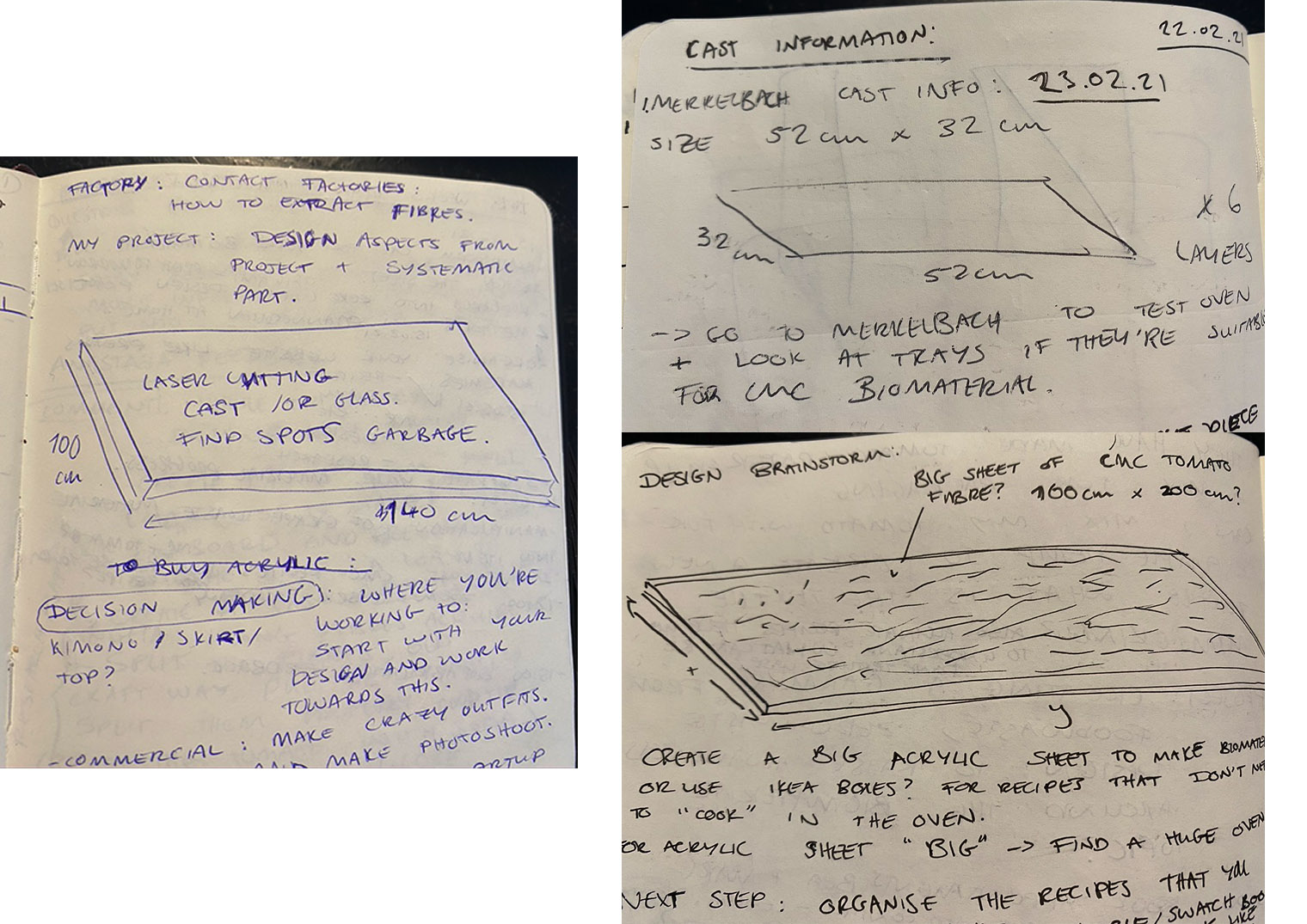
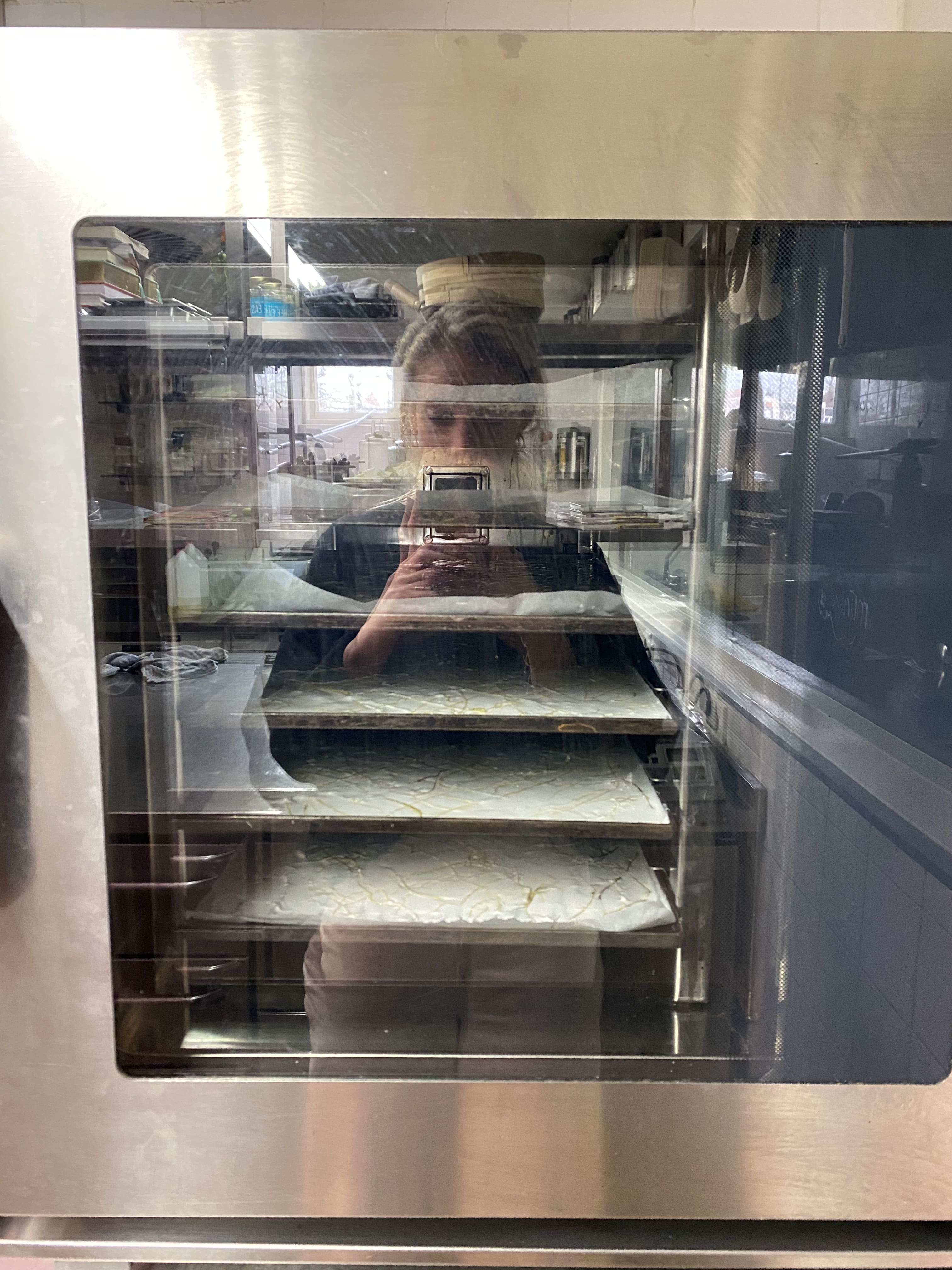


Boertex Photoshoot:¶

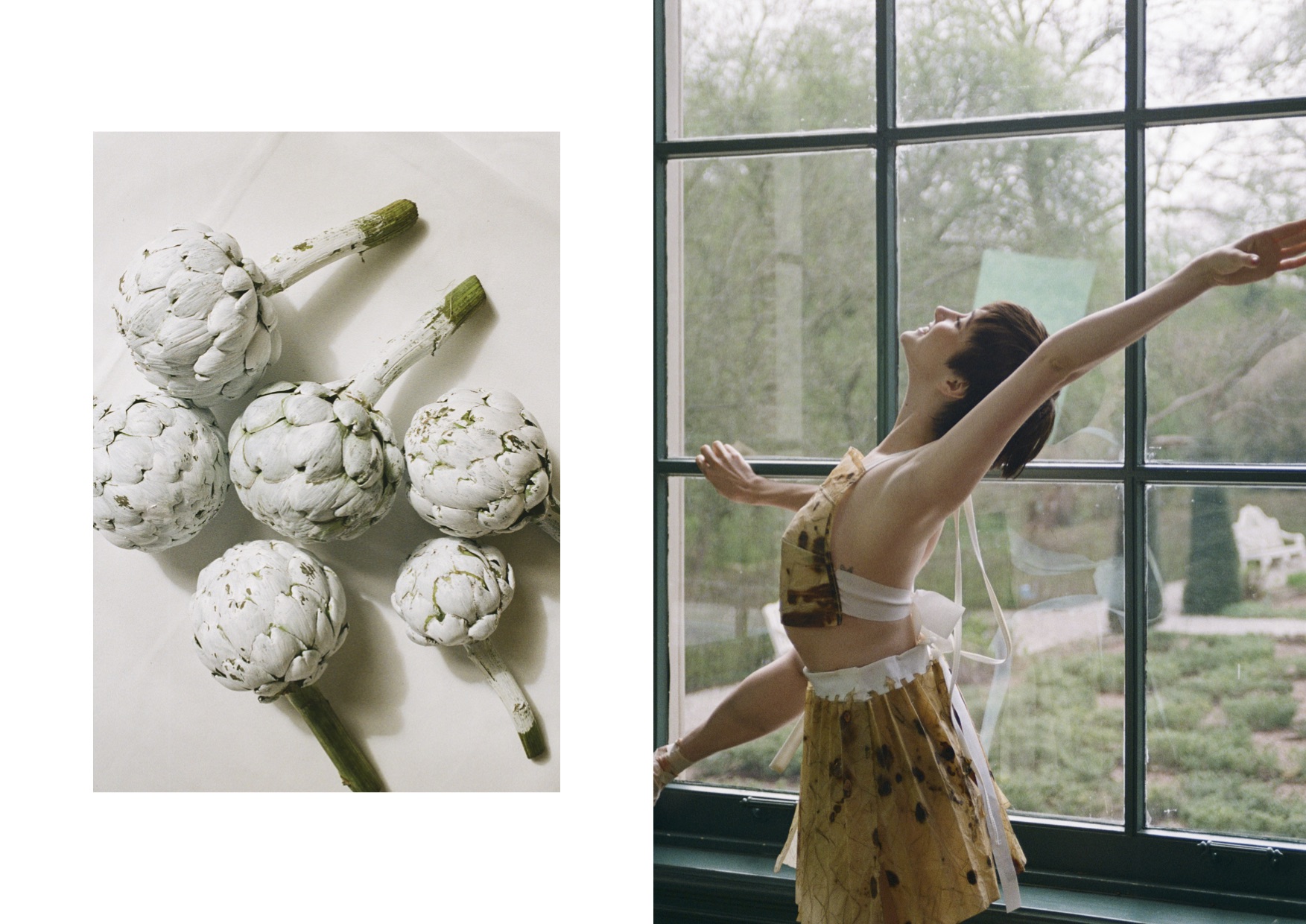

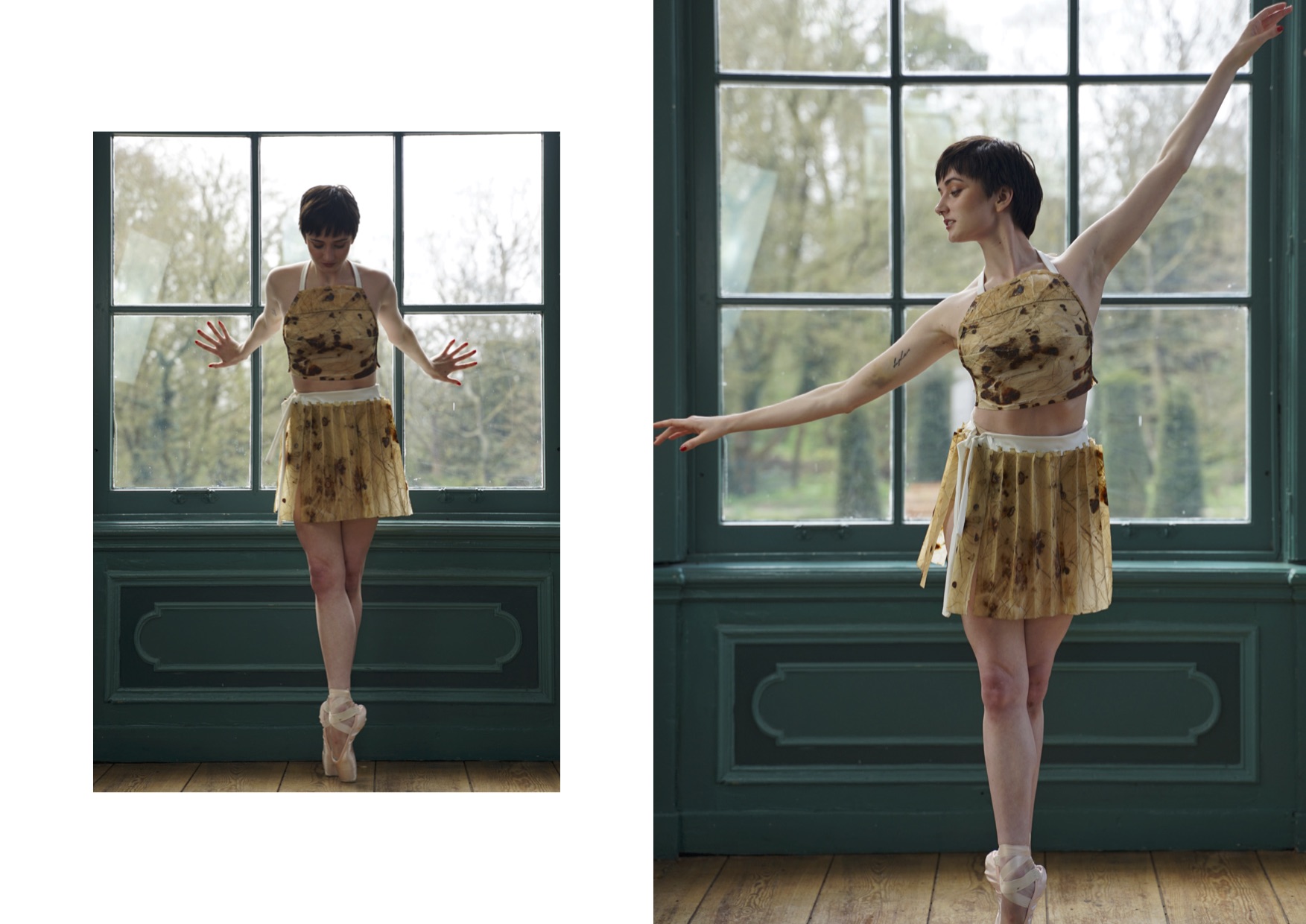
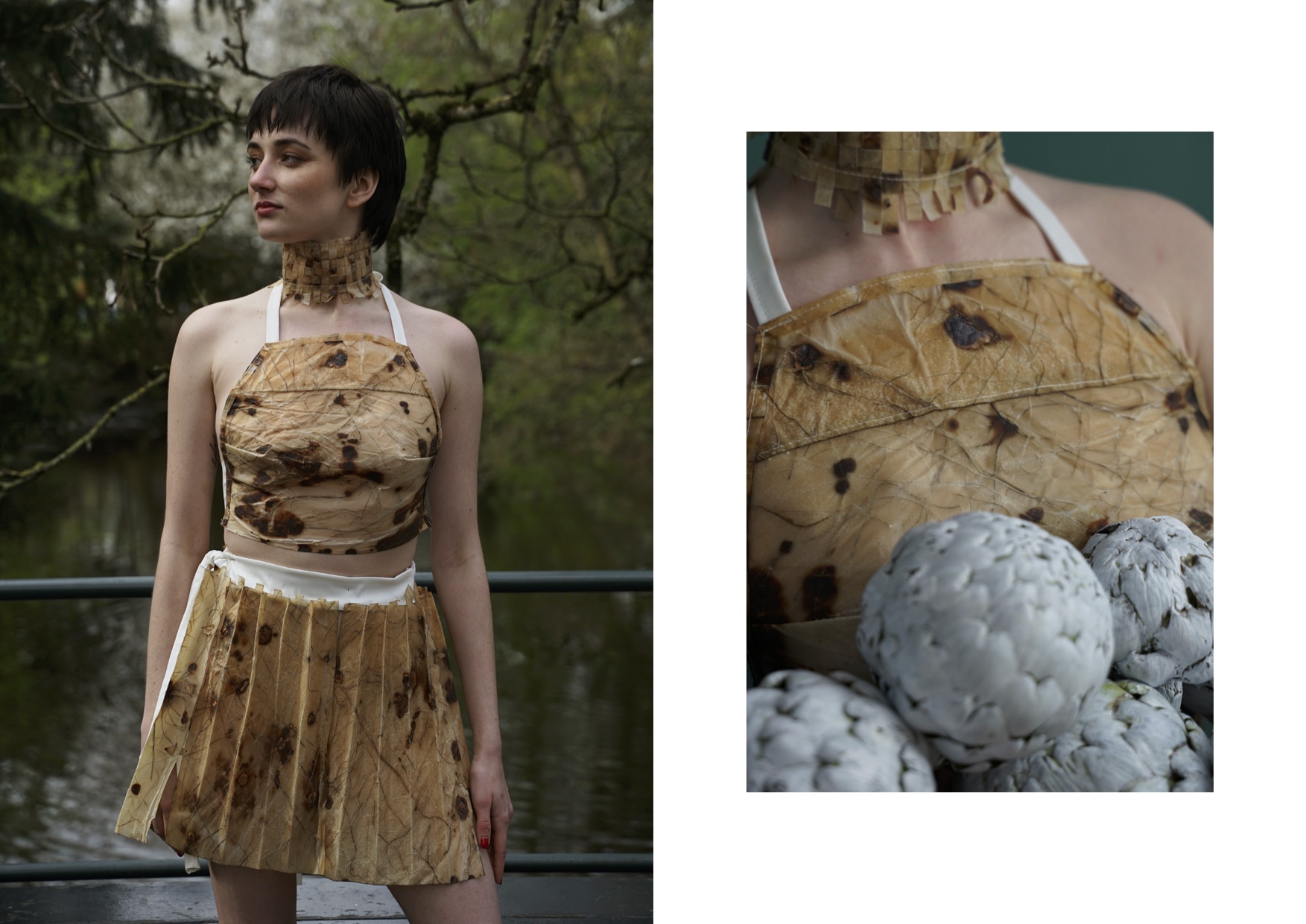
Other:¶
The Biomaterial cookbook serves as a small library for other designers who would like to collect information about bio fabricating and apply this to their own projects. The waste stream from farmers can be utilized and turned into a new item by designing smartly and tactically. This item/garment can serve as an example of reusing waste food sources and creating a circular economy.
The idea is to highlight the importance of recycling the vegetable waste from farmers and greenhouses in Holland, as they are able to supply vegetable waste for potential material innovation. Seasonal because of the harvests.
The majority of these were very focused on the biology and design, two of the topics I find most applicable to my final project. In the O.S circular fashion week I was able to design my holographic menswear vest. The thought of using the parametric modelling seems like a challenging but fun experiment to begin with.
Therefore, the way in which the materials are approached is by analyzing the results and qualities through the eyes of a designer. The material development process results in new knowledge both expected and unexpected. As the development continues, design must be kept in mind every step of the way adapting to the limitations and opportunities from the newly developed biomaterial.
Bioplastic experimentation. The aesthetics of the developed material will decide in which way the garment will take form in the end. Question is why not look for alternatives? In this project I could potentially be the stakeholder.
-
Sustainable development.
-
Smarter design
-
My role as a designer is to challenge the old ways by designing a modern product.
Special thanks to:
- Olaf Lindehoff
- Roy Merkelbach
- Cristiano carciani
- Giedhre Kazokaite
The next step for Boertex:¶
-
Spinning techniques must be reconsidered if there was a yarn to be produced from vegetable waste. Cotton spinning technique applied to vegetable yarn?
-
Taking the polymer research paper and collaborating with chemists to see whether there is an opportunity to work with this stream of waste. Possible step for Boertex's circular system.
-
Partner with farmers and evaluate the cost adantage to this project: The farmer can benefit from a collaboration. Getting rid of their waste by selling their waste for an additional income. Lessening the farmers carbon emission and resulting in sustainable development.
-
Collaborate with factories that are already milling in southern Europe: Spain & portugal. Review their production process by visiting their factories and coming up with a proposal?